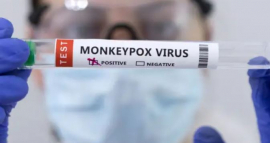
CAPE TOWN, Sept 10 (NNN-SANEWS) — South Africa’s Department of Health has called for continued public vigilance as the country records one more laboratory-confirmed case.
According to the department, the patient is a 38-year-old man who sought medical intervention at a private medical practice in Cape Town on Wednesday last week.
This is after he experienced typical mpox lesions on the face, trunk, thorax and genitals. He also had a headache, light sensitivity, sore throat and muscle pain.
“The patient was not admitted but urged to home-isolate while waiting for test results. The results came back positive on Friday, 6 September,” the statement read.
According to the investigation report, the patient has no recent international travel history nor had contact with a suspected or confirmed mpox case.
The outbreak response team in the province has since been activated, while the contact tracing and monitoring activities are ongoing.
This increases the total number of positive cases recorded in the country since the outbreak in May this year to 25 cases, including three deaths.
Twelve of these were reported in Gauteng, 11 reported in KwaZulu-Natal and now two in the Western Cape.
“The patient is home isolating and in a stable condition. We urge all the identified and suspected contacts to cooperate with health officials during contact tracing for screening and possible diagnosis to prevent further transmission of this preventable and treatable disease.
“The healthcare workers understand the importance of confidentiality in managing reported and suspected cases of notifiable medical conditions.”
Meanwhile, according to the department, the risk of wider transmission remains low in the country, but anyone can contract mpox regardless of age, gender, sexual orientation and race.
Some of the common symptoms of mpox include a rash which may last for two to four weeks, fever, headache, muscle aches, back pain, low energy and swollen glands.
“The painful rash looks like blisters or sores, and can affect the face, palms of the hands, soles of the feet, groin, and so on,” the department explained. — NNN-SANEWS




